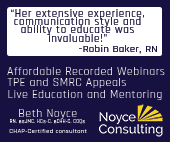From the NAHC Newsdesk,
March 12, 2024
On Monday, March 11th, President Biden released a $7.26 trillion proposed budget for fiscal year (FY) 2025, which begins October 1st, 2024. While the White House budget is simply a request and Congress has final say on government spending, it does provide a window into the president’s priorities and where his administration wants to direct its efforts going forward. Lawmakers have not yet finalized spending for the current fiscal year — which runs through Sept. 30 — and will need to begin negotiating funding legislation for FY2025 simultaneously with ongoing debates over current fiscal year appropriations.
The FY2025 budget requests more than $130.7 billion to fund the Department of Health and Human Services (HHS). In addition to this $130.7 billion of requested appropriations, HHS also projects spending over $1.7 trillion on mandatory programs, such as Medicare and Medicaid, that are not subject to the annual appropriations process. Notably, the budget also would extend the Medicare sequester cuts by one year until 2032 (they were previously extended through 2031 by The Infrastructure Investment and Jobs Act of 2021), which would provide savings of around $7.6 billion. The budget also proposes to increase contributions to the Medicare trust fund and extend its projected solvency by increasing taxes on earned and unearned income for those individuals with annual income over $400,000 from 3.8% to 5%.
Over the coming weeks members of the Executive Branch will be testifying before key committees in the House and Senate to provide additional detail around the recommendations put forth in the budget documents. As additional relevant detail is made available, it will be covered in “NAHC Report.”
Provisions of interest in the Budget include:
Medicare
Multiple provider types:
HOME HEALTH
- Create a Permanent Medicare Home Health Value-Based Purchasing Program:
The Home Health Value-Based Purchasing Model, which the CMS Innovation Center launched in 2016 and expanded nationwide in 2022, successfully improved the quality of home healthcare at lower cost without evidence of adverse risks. This proposal converts the expanded model into a permanent Medicare program, similar to value-based purchasing programs already in place for other Medicare providers. [Budget Neutral]
HOSPICE
- The Budget proposes to implement a new “value-based purchasing” (VBP) program for hospices (and many other provider sectors that do not already have a VBP program) starting in CY2027. No further details are provided about this VBP-for-hospice program, or the other sectors’ VBP programs, other than that they would be budget-neutral, and that CMS would consider granting “hardship exemptions” to certain providers. NAHC reminds members that just last week, CMMI decided to terminate the Value-Based Insurance Design (VBID) hospice “carve-in” demonstration at the end of CY2024 (the demo had been set to run through CY2030). Over the years, various policy stakeholders have floated different Medicare hospice benefit (MHB) payment reforms, and 2010’s Affordable Care Act legislation called on CMS to pilot test a VBP program for hospices, which it has not done to-date.
Medicaid
- The budget also proposes to require that states report on the national Medicaid Adult and HCBS Quality Reporting measures. Notably, this budget proposal seeks legislative authority to mandate this reporting while CMS included a mandate for states to submit HCBS Quality Reporting in their 2023 proposed Medicaid Access rule.
- The Budget proposes to require a Medical Loss Ratio (MLR) for Medicaid and CHIP managed care organizations, with required remittances if plans do not meet the minimum standard. Current law allows, but does not require, states to impose a MLR on their health plans.
- Proposes to authorize CMS to negotiate supplemental drug rebates on behalf of interested States in order to leverage savings from pooled purchasing power. (5.18 billion savings) As discussed in the State of the Union address, President Biden’s budget includes a proposal to create a Federal option that provides health care coverage to low-income individuals in States that have not expanded Medicaid. As a corollary to this proposal, the budget includes incentives for states to retain existing Medicaid expansions not default to the Federal Option. The budget contains several proposals to strengthen and streamline services for dual eligible individuals including:
- Aligning Medicare Savings Programs and Part D Low income Subsidy Eligibility Methodologies to make it easier for states and individuals to determine eligibility and enroll in both.
- Extending the Qualified Medicare Beneficiary (QMB) certification period. Currently states can limit QMB eligibility to periods less than one year, whereas this proposal would establish a 12-month eligibility certification. Provide CMS with the authority to unify appeals processes for Medicare and Medicaid review for individuals enrolled in integrated managed care plans by waiving amount-in-controversy minimums and allowing benefits to continue while an appeal is pending.
- Allow retroactive coverage of Medicare Part B premiums for QMB applicants.
- A proposal to allow CMS to issue partial deferrals and disallowances that target issues of noncompliance in managed care environments and to provide CMS with additional managed care enforcement options.
DEPARTMENT OF LABOR (DOL)/HEALTH CARE WORKFORCE
- The President’s Budget proposes to establish a national, comprehensive paid family and medical leave program administered by the Social Security Administration to ensure all workers can take up to 12 weeks of leave to care for a seriously ill loved one. Further, the President continues to call on Congress to require employers to provide at least seven paid sick days per year to all workers, and to ensure that employers cannot penalize workers for taking time off to address the health needs of a family member.
- The Budget expands workforce training along with creating career pathways to in-demand jobs through an $8 billion mandatory Career Training Fund.
- Broadens Access to Registered Apprenticeships: The Budget increases support for Registered Apprenticeships, a training tool for future workforces in a number of in-demand industries, including health care.
-
- The proposal seeks to invest $70 million in the Strengthening Community college training program, which builds community colleges’ capacity to design and deliver high-quality, evidence-based training programs.
-
- Invests in Caregivers Support Programs through the VA. Recognizing the critical role family caregivers play in supporting the health and wellness of veterans, the Budget provides critical funding for the Program of General Caregivers Support Services. The Budget also specifically provides $2.9 billion for the Program of Comprehensive Assistance for Family Caregivers, which includes stipend payments and support services to help empower family caregivers of eligible veterans.
-
- Nursing Workforce Development — The FY 2025 budget includes $320 million for Nursing Workforce Programs, an increase of $20 million above FY 2023. The budget includes an additional $10 million to address national nursing needs, train more nurses, and strengthen workforce capacity in education, practice, and retention. HRSA will support an increase in the number of nurses trained to provide prenatal care through investments in perinatal maternal healthcare in rural and underserved community settings to increase access and improve the quality of patient care. The investment also increases the number of nurse faculty and clinical preceptors which are critical to expanding nurse training and producing more new nurses.
-
- The budget also includes an increase of $10 million for Advanced Nursing Education to bolster the maternal and perinatal workforce by supporting maternal health nurses available to provide specialized care. The program will continue to increase the number of qualified nurses in the primary care workforce, including nurse practitioners, clinical nurse specialists, and Sexual Assault Nurse Examiners.
-
- Health Care Workforce Innovation Program — The FY 2025 budget invests $10 million for a new program to jumpstart strategies to grow the healthcare workforce and address healthcare workforce shortages across disciplines such as physicians, nursing, and behavioral health. This new program would invest in innovative approaches to accelerate the transformation of healthcare workforce training to support a modern, robust, and diverse workforce training pipeline.
- HRSA supports the health workforce through health professions scholarships and loan repayments in return for service in underserved and rural communities. The FY 2025 budget requests $16.3 billion for HRSA, which is $2.0 billion above FY 2023. This total includes $8.3 billion in discretionary budget authority and $8.0 billion in mandatory funding and other sources.
PROGRAM INTEGRITY AND OVERSIGHT EFFORTS
-
- The Budget includes a proposal to “Increase Private Equity and Real Estate Investment Trust Ownership Transparency in Long-Term Care Facilities.” This proposal continues the Administration’s aggressive oversight of Wall Street activity in health care and would require skilled nursing facilities with either of these ownership types, whether direct or indirect, to provide additional financial disclosures above and beyond other provider types.
-
- The budget also includes a proposal that would modify the requirement that owners with a five percent or greater direct or indirect ownership must be reported on the provider/supplier’s enrollment application, to require owners with any percentage-level of interest be reported.
-
- HHS states that “top priorities that would require additional funding for CMS include:
- Increasing Medicare fee-for-service medical review, including the possible adoption of artificial intelligence (AI) and natural language processing technologies;
- Addressing vulnerabilities identified by the Vulnerability Collaboration Council, report recommendations from the Government Accountability Office (GAO) and HHS-OIG, and emerging issues;
- Increasing nursing home enforcement (e.g., ownership reporting validation, reviewing Part D data of beneficiaries who reside in nursing facilities, and supporting DOJ in cases brought under the False Claims Act related to quality of care) and enforcement of home and community-based services (HCBS); and
- Quickly addressing fraud scams, as needed, above current levels.”
- HHS states that “top priorities that would require additional funding for CMS include:
- HHS states that OIG’s “key focus areas” will include managed care, nursing homes, and home and community-based services.
Health Equity
SURVEYS AND CERTIFICATIONS (MEDICARE & MEDICAID)
- Generally and across provider types, CMS indicates in many places in the budget documents that they are struggling with survey backlogs, primarily amongst state survey agencies (SSAs), and mostly as a result of both lingering COVID impacts and multi-year stagnant funding from Congress for Survey & Certification activities. CMS states that “With years of flat funding, the Survey and Certification program can no longer meet statutory frequency requirements or adequately guarantee the safety and quality of care for patients receiving care in CMS certified facilities.”
- They also write that “CMS forecasts an increased number of complaint surveys pending and overdue for investigation across all provider types, including some immediate jeopardy complaints. The concern with the backlog is further confounded by the aforementioned increasing number of complaints being reported as well as surveyors finding more serious quality of care issues when conducting onsite surveys. These findings result in longer surveys and possible onsite revisit surveys. They also indicate a general worsening in the quality of services being provided to patients and residents.”
- Specifically for the hospice program, CMS states that “CMS did not meet the FY 2020 – FY 2022 target of 98% [of hospices surveyed within the last 36-months, as required by law] due to the COVID-19 Public Health Emergency (PHE) and reprioritization of survey activities based on guidance published throughout the PHE.”
- “While Accrediting Organizations have eliminated backlogs resultant from the PHE, SAs still face challenges. As SAs reduce the backlog, we anticipate meeting the target goal of hospice facilities surveyed within the required 36 months in the upcoming years.” CMS indicates that for FY2022, the most recent year with complete data, 87.1 percent of hospices were surveyed in the last 36 months.
NAHC POSITION: “This is important data for NAHC’s advocacy around CMS’ flawed Special Focus Program (SFP) design and the CMS’ plan to launch the program at the end of 2024. Given that hospice surveys are such a critical component of the SFP algorithm, it is important that CMS use accurate and up-to-date survey data; however, the budget language here seems to indicate that CMS is not caught up on the hospice survey backlog and may not be able to ensure that all hospices have indeed been surveyed in the last 36 months for at the near future.”
- The budget requests $492 million for Survey and Certification, an increase of $85 million or 21 percent above FY 2023, to fund Medicare and Medicaid provider survey and certification activities. If funded at this level, CMS claims it would have sufficient resources to ensure states:
-
-
- Complete approximately 85% of the recertification surveys for statutory facilities (up from the current 65% via FY2024 levels), survey projected complaints in all facility types at an Actual Harm, Immediate Jeopardy (IJ), and Non-IJ High levels, address a portion of the current complaint backlog, and a proportional recertification survey frequency rate for non-statutory facilities with a focus on those facility types with higher beneficiary risks.
- CMS also states that at this level, Hospice and ESRD facilities will have funding to perform initial surveys on new providers wanting to enter the program to gain Medicare and/or Medicaid certification
-
- Additionally, the budget proposes, effective in FY 2026, to shift the funding mechanism for nursing home surveys from discretionary to mandatory appropriation and to increase the amounts to a level necessary to achieve a 100 percent nursing home survey frequency, adjusted annually for inflation.
ADMINISTRATION FOR COMMUNITY LIVING (FUNDING FOR AGING AND DISABILITY COMMUNITY-BASED ORGANIZATIONS)
-
- The proposal includes $2.7 billion for ACL, which is an increase of $70 million on paper above FY 2023 amounts, but it effectively represents an approximately $112 million increase due to eliminating $42 million of earmarks in the accounting tables.
-
- ACL requests an additional $10 million to expand their Direct Care Workforce Strategies Center and fund capacity-building grants to states to support building partnerships among state Medicaid, aging, disability, and workforce agencies; coordinating and leveraging programs and funding streams; and developing and testing strategies to attract, train and retain direct care professionals.
- ACL also requests $1.1 billion for nutrition services, which is the largest part of the Older Americans Act and would be an increase of $83 million above FY 2023.
HEALTH RESOURCES AND SERVICES ADMINISTRATION
-
- HRSA — $320M line item for Nursing Workforce Development (pg. 25):
- Nursing Workforce Development &mndash; The FY 2025 budget includes $320 million for Nursing Workforce Programs, an increase of $20 million above FY 2023. The budget includes an additional $10 million to address national nursing needs, train more nurses, and strengthen workforce capacity in education, practice, and retention. HRSA will support an increase in the number of nurses trained to provide prenatal care through investments in perinatal maternal healthcare in rural and underserved community settings to increase access and improve the quality of patient care. The investment also increases the number of nurse faculty and clinical preceptors which are critical to expanding nurse training and producing more new nurses.
- The budget also includes an increase of $10 million for Advanced Nursing Education to bolster the maternal and perinatal workforce by supporting maternal health nurses available to provide specialized care. The program will continue to increase the number of qualified nurses in the primary care workforce, including nurse practitioners, clinical nurse specialists, and Sexual Assault Nurse Examiners. (pg. 30)
- HRSA — $320M line item for Nursing Workforce Development (pg. 25):
-
- HRSA — $10m line item for a Health Care Workforce Innovation Program (pg. 25)
- Health Care Workforce Innovation Program – The FY 2025 budget invests $10 million for a new program to jumpstart strategies to grow the healthcare workforce and address healthcare workforce shortages across disciplines such as physicians, nursing, and behavioral health. This new program would invest in innovative approaches to accelerate the transformation of healthcare workforce training to support a modern, robust, and diverse workforce training pipeline.(pg. 30)
- HRSA — $10m line item for a Health Care Workforce Innovation Program (pg. 25)
- HRSA — $51m line item for Medical Student Education (pg. 25)
- HRSA — “HRSA supports the health workforce through health professions scholarships and loan repayments in return for service in underserved and rural communities. The FY 2025 budget requests $16.3 billion for HRSA, which is $2.0 billion above FY 2023. This total includes $8.3 billion in discretionary budget authority and $8.0 billion in mandatory funding and other sources. (pg. 27)
© 2024 NAHC All rights reserved.



